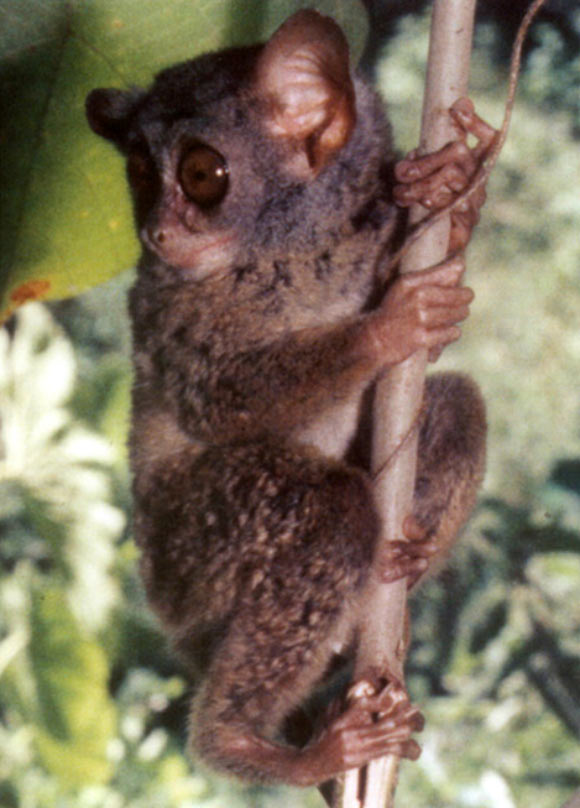An international team of scientists has discovered a new species of tarsier living on the Togean Islands of Central Sulawesi, Indonesia.

The Niemitz’s tarsier (Tarsius niemitzi) from Malenge Island, Sulawesi. Image credit: Myron Shekelle.
Tarsiers are small, nocturnal, predaceous primates of the 45-million-year-old family Tarsiidae.
Together with their presumed sister family, the extinct Omomyidae, they were once widespread in Asia, Europe and North America, but today populate only insular Southeast Asia.
Tarsiers are intermediate in form between lemurs and monkeys, measuring up to 15 cm in length (excluding tail) and weighing 100-150 g.
These creatures have the largest eyes relative to body size of any mammal on Earth, each typically larger than their brain. Similar to owls, they can rotate their necks a full 180 degrees in either direction.
Their legs and feet are adapted for sudden, powerful leaps, with an elongated ankle bone, the tarsus, for which they are named. They can jump 40 times their body length in a single leap.
The tarsier family contains three genera that are found in distinct biogeographic regions: (i) Tarsius is found on Sulawesi and surrounding islands; (ii) Cephalopachus is found in Sundaland, principally southern Sumatra and the island of Borneo; and (iii) Carlito is found on islands of the southern Philippines that were a single Ice Age landmass, sometimes called Greater Mindanao.
The newly-discovered species belongs to the genus Tarsius and can be found only on Indonesia’s Togean Islands, in Tomini Bay, bounded by the northern and eastern peninsulas of Sulawesi.
Named the Niemitz’s tarsier (Tarsius niemitzi), it has a darkly pigmented skin, particularly the tail, and relatively dark pelage with dark gray facial fur, particularly in adults.
Its body weight (females: 104-110 g, males: 125-138 g) and tail length (females: 245-261 mm, males: 246-258 mm) fall within the range of a number of other Tarsius species.
The species was described by Dr. Myron Shekelle from the Department of Anthropology at Western Washington University and his colleagues from the United States, Australia, and Indonesia.
“This species is named in honor of Dr. Carsten Niemitz, universally regarded as the father of tarsier field biology,” they explained.
A paper describing the Niemitz’s tarsier was published in the 2019 issue of the journal Primate Conservation.
_____
Myron Shekelle et al. 2019. A New Tarsier Species from the Togean Islands of Central Sulawesi, Indonesia, with References to Wallacea and Conservation on Sulawesi. Primate Conservation 33








